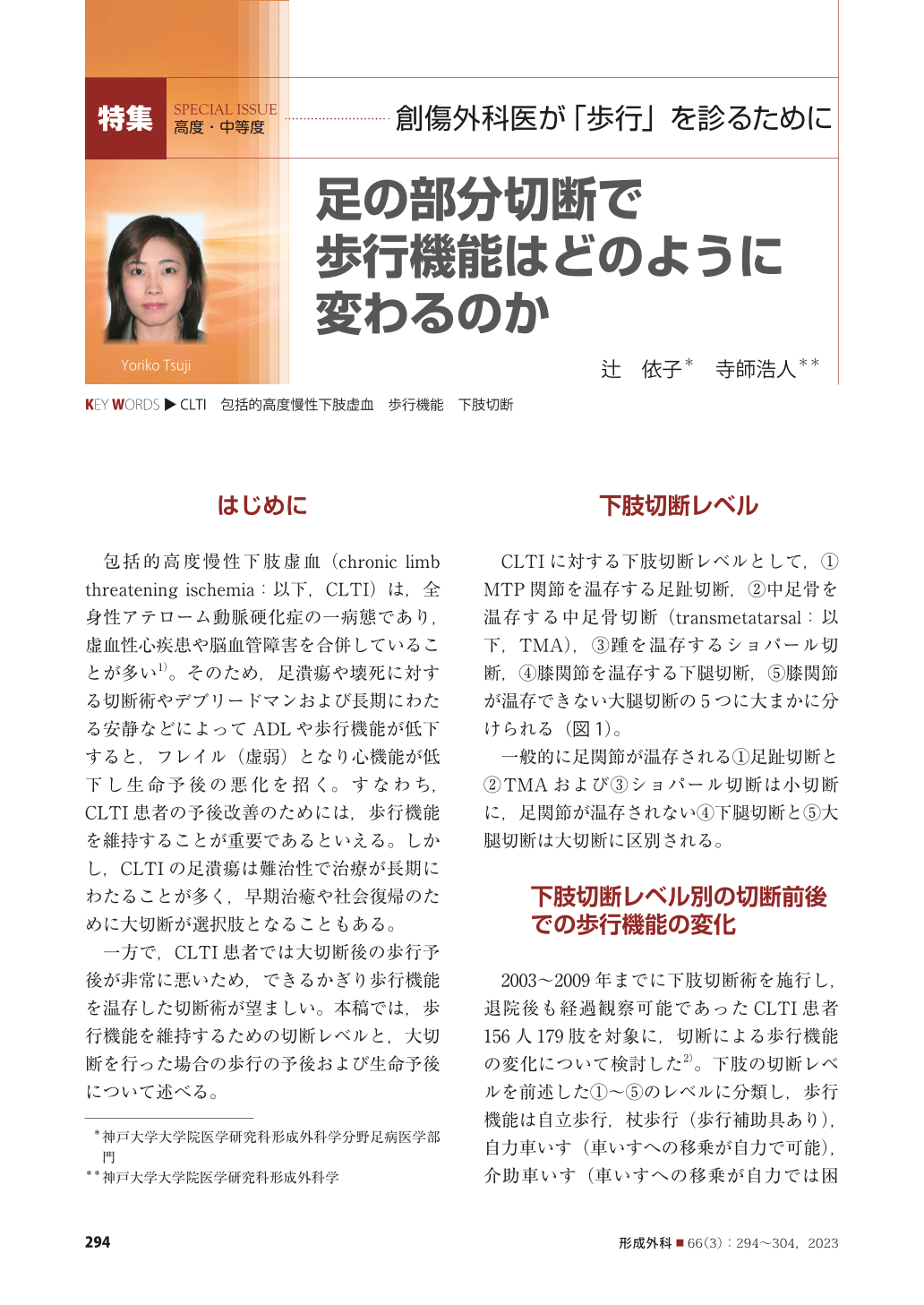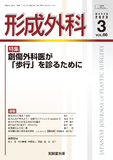Japanese
English
- 有料閲覧
- Abstract 文献概要
- 1ページ目 Look Inside
- 参考文献 Reference
はじめに
包括的高度慢性下肢虚血(chronic limb threatening ischemia:以下,CLTI)は,全身性アテローム動脈硬化症の一病態であり,虚血性心疾患や脳血管障害を合併していることが多い 1)。そのため,足潰瘍や壊死に対する切断術やデブリードマンおよび長期にわたる安静などによってADLや歩行機能が低下すると,フレイル(虚弱)となり心機能が低下し生命予後の悪化を招く。すなわち,CLTI患者の予後改善のためには,歩行機能を維持することが重要であるといえる。しかし,CLTIの足潰瘍は難治性で治療が長期にわたることが多く,早期治癒や社会復帰のために大切断が選択肢となることもある。
一方で,CLTI患者では大切断後の歩行予後が非常に悪いため,できるかぎり歩行機能を温存した切断術が望ましい。本稿では,歩行機能を維持するための切断レベルと,大切断を行った場合の歩行の予後および生命予後について述べる。
Chronic limb-threatening ischemia (CLTI) is a condition of systemic atherosclerosis that is often complicated by ischemic heart disease and cerebrovascular disease. The decline in a CLTI patient’s activities of daily living (ADL) and walking function due to amputation for foot ulcers and necrosis, debridement, and prolonged periods of bed rest leads to frailty, which in turn leads to a decline in cardiac function and a worsening of life expectancy. In other words, although it is important to preserve ambulatory function in order to improve the prognosis of CLTI patients, the patients’ conditions are often refractory and treatment is often prolonged; major amputation may be an option for early healing and social reintegration. However, the prognosis for ambulation after major amputation in CLTI patients is very poor. In this section, we will discuss amputation levels to preserve gait function and the gait and life prognosis of patients who have undergone a major amputation.

Copyright© 2023 KOKUSEIDO CO., LTD. All Rights Reserved.


